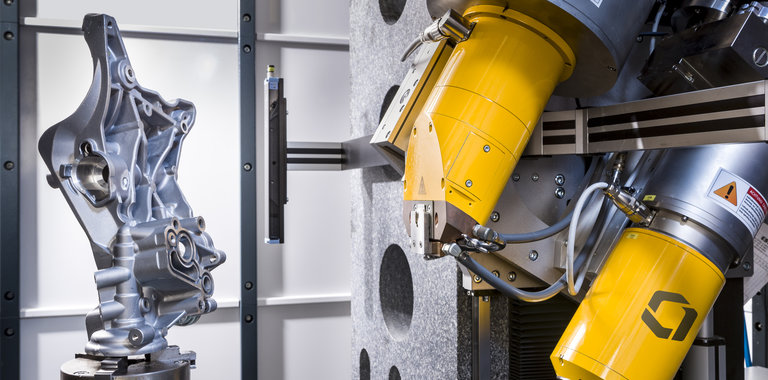
¿Cuáles son las definiciones más comunes en radiografía industrial?
Radioactivity: The activity of a radioactive source of radiation (isotope) is equal to the number of disinte- grations per second. The SI-unit is the Becquerel (Bq) and is equal to 1 disintegration per second. The Becquerel is too small a unit to be used in industrial radiography. Source strengths are, therefore, quoted in Giga Becquerel (GBq). 1 Curie = 37 GBq, see in the table
Ionisation dose rate: The output of an X-ray set or isotope per unit of time is generally quoted at one metre distance from the source, and designated in C/kg.s, see in the table
Ionisation dose: The ionising effect of radiation in one kilogram of dry air is used to define the ionisation dose. The dose of radiation delivered is equal to the ionisation dose rate multiplied by the amount of time during which radiation takes place. The designation used is C.kg. The output of an X-ray set, however, is quoted in Sievert per hour, measured at 1 metre distance.
Absorbed energy dose: The radiation energy that is absorbed is expressed in Joules per kilogram (J/kg). The SI-unit is called Gray (Gy) whereby 1 J/kg = 1 Gy.
Equivalent dose (man dose): The Sievert (Sv) is the SI-unit for the biological effect of ionising radiation upon man. It corresponds with the product of the absorbed energy dose gray (Gy) with a factor that has been experimentally determined and that indicates the relative biological effect (RBE) of the ionising radiation. For X- and γ-radiation this factor is equal to one, so that the Sievert is equal to the Gray.


